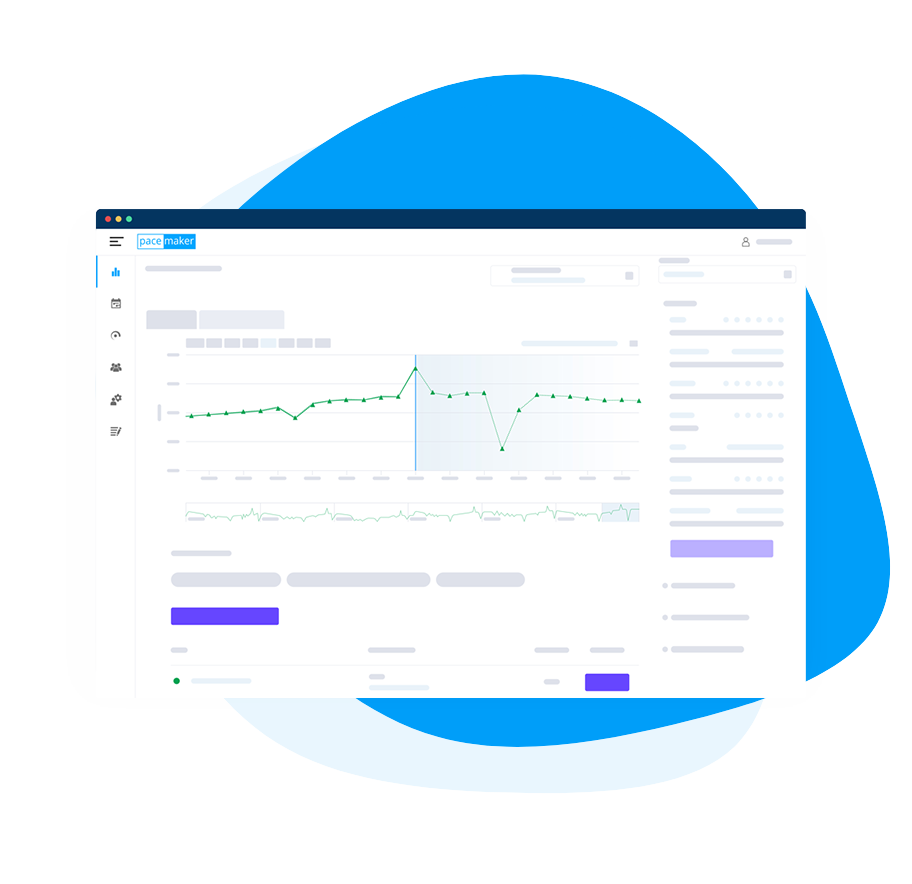Service
Demand Forecasting
Demand Forecasting


Demand Forecasting can be used in various applications. Get a quick insight.

Use Case
Forecasting methodology in the insulation material industry through AI integration
Dämmaterial, Dämmaterial Industrie, Insulation Material, insulation material industry, supplier, construction, construction industry
In the complex industrial landscape of insulation materials, in which multiple market segments and diverse product lines coexist, precise forecasting and strategic planning based on this is essential. For a multinational manufacturer in this sector, forecasting plays a critical role, as it is the basis for budget distribution across the various departments. Previous forecasting methods relied on manual calculations and the use of Excel-based solutions, which often only work with simple averages. This high level of manual and personnel effort not only limited the accuracy of the forecasts, but also their timeliness and frequency. The forecasting methods were also vulnerable to unpredictable market changes, which often led to delays in the supply chain. The introduction of an AI-based forecasting tool marked a turning point for the manufacturer. This advanced tool not only uses internal historical data, but also integrates external influencing factors such as special calendar events, past and future expected inflation indices and building permits into its analyses. As a result of this comprehensive data integration, the accuracy of forecasts was significantly increased to 91.4%.The increased forecast accuracy led to numerous positive effects on operations. A more reliable forecast enabled a more efficient and targeted budget allocation, which made it possible to achieve significant cost savings. Improved predictability and speed of response to market changes also contributed to a reduction in delivery times. The implementation of AI technology thus strengthened operational safety and sustainably improved the company's competitiveness.By using innovative AI technologies in forecasting practice, the insulation material manufacturer was not only able to optimize its processes, but also make it more adaptive and resilient to market fluctuations. This case study impressively demonstrates how technological advances can be used specifically to solve specific industry-specific challenges in order to promote operational efficiency and economic stability.

Use Case
Aerospace supply chain planning
Aerospace, industrial, industry, supply chain, aerospace industry, supplier
Customers from various industrial sectors, including original equipment and the aftermarket, are facing similar challenges. A specific example of this is a supplier to leading aerospace companies. It must predict the developments of over 4,000 material types in various market segments. For one of its main end customers, the planning processes were previously carried out manually and exclusively using Excel. In the past, this method of planning led to inaccurate results, which in turn led to both inventory shortages and excessive inventories. To overcome these challenges, pacemaker.ai provides a solution that provides automated, regularly updated forecasts. These forecasts serve as a basis for replenishment planning and help to precisely define the quantities to be purchased at the level of individual products.The planning is based on a forecast period of 18 months, during which the delivered materials are carefully reviewed. An important feature of the pacemaker.ai solution is the implementation of a five-level grouping structure. Within this structure, Cluster A materials are given priority, with a total of 215 articles being prioritized based on ABC/XYZ analysis.The current accuracy of pacemaker.ai's predictions is over 80%. Continuously refining and adjusting these forecasts is a key part of pacemaker.ai's commitment. This shows the company's efforts to constantly optimize its customers' supply chains and maximize their efficiency through innovative approaches in data analysis and machine learning.The integration of advanced, data-driven forecasting tools such as those from pacemaker.ai can significantly help solve traditional supply chain planning problems. The use of automated systems not only improves the accuracy and efficiency of inventory management, but also prevents costly overstocks and shortages. This represents enormous added value for suppliers in highly dynamic industries such as aerospace.

Use Case
Revolutionizing sales forecasting in the filter industry with AI-based solutions
filter industry, oil filters, air filters, automotive industry, automotive, filter, filters, filter supplier, suppliers, supplier
A leading supplier in the automotive industry faced significant difficulties in predicting monthly sales of oil and air filters for the B2B market in Europe, Russia and the UK. The volatility of the “call-off” data for these products was exceptionally high and showed fluctuations of up to 80%. The previous forecasting methods were based primarily on manual calculations by a team of four employees. This approach often led to inaccuracies, particularly for products with low sales volumes, which in turn was offset by high inventories. These inventories represented a significant capital commitment of billions. With these challenges in mind, the company turned to pacemaker.ai, a specialist in AI-powered forecasting technologies. Pacemaker.ai developed an advanced machine learning system that was specifically configured for the supplier's needs. This system integrated not only historical sales data, but also industry-specific influencing factors such as motor vehicle registrations, pollen count data and air pollution indices into the analysis. The introduction of the automated demand forecasting solution fundamentally transformed the company's sales forecasting. The forecast accuracy was significantly increased, which led to a reduction in forecast error of an impressive 41%. This improvement extended across a portfolio of 2000 products. In addition, manual planning effort was significantly reduced, which enabled employees to focus on more strategic tasks.Automation and increased accuracy of sales forecasts enabled the company to manage its inventory more efficiently and free up capital that had previously been tied up in oversized inventory volumes. These resources can now be invested in innovative projects and the further development of the product range. The success of this project demonstrates the potential of AI-based technologies to transform and sustainably improve traditional business processes.

Use Case
Optimizing logistics planning through AI-driven forecasting technology
logistics, warehouse, tire, tires, logistics planning, warehouse opeations, delivery
Every year, our customer is faced with the daunting task of managing logistics for the delivery of millions of tires. Efficient planning of personnel and other resources necessary for warehouse operation requires extremely precise forecasts of the expected output quantities of goods. The previous method, based on monthly forecasts from the client, required extensive manual entries in Excel spreadsheets. These were supplemented with our own assessments in order to create a useful planning basis. However, the high expenditure of time and the poor quality of forecasts led to customer dissatisfaction. To address these challenges, pacemaker.ai has developed a tailor-made solution that not only improves the accuracy of forecasts but also significantly simplifies the planning process. By implementing advanced forecasting methods that forecast daily and weekly output volumes for each coming month, the forecast error was reduced by an impressive 18%.Integration of relevant influencing factorsThe new forecasting method uses a variety of data sources, including historical sales data as well as information on holidays, holidays, weather conditions and seasonal fluctuations. These factors play a decisive role in predicting output quantities and contribute to further increasing accuracy.Automation and increased efficiencyThe daily and automatically updated forecasts are made available to the customer, which reduces manual effort to a minimum. This increase in efficiency enables customers to better plan resources and react more quickly to changes in demand.Future prospects and further plansBy using this innovative technology, our customer was able to strengthen its position in the highly competitive logistics market. The successes of the new forecasting methods motivate further exploration of additional uses of AI in other areas of the company. Overall, this case clearly shows how the use of artificial intelligence and machine learning in logistics planning not only improves forecast accuracy, but can also significantly increase operational efficiency.

Use Case
Automobile manufacturer predicts sales of over 500,000 items
automotive, automobile, automobile manufacturing, automotive industry, car, car industry
A leading German automotive manufacturer was confronted with fluctuating demand in its after-sales business and was increasingly dissatisfied with the previous approach to predicting these developments. In search of an improved solution, the company decided to implement pacemaker.ai, a provider of transparent forecasting technologies.The forecasting method used up to that point was developed internally and was based primarily on trend analyses. However, this method had recently lost accuracy. An additional problem was that the expertise required to carry out and adjust forecasts was largely concentrated with just one person in the company, increasing the risk of loss of knowledge and dependency.The transition to pacemaker.ai offered a solution that not only improved forecasting quality, but also more broadly distributed knowledge of predictive methods within the company and thus made it less susceptible to staffing bottlenecks. As a result of this strategic change, the automotive manufacturer was able to create a more robust and transparent planning basis, which ultimately led to more efficient management of the after-sales area. pacemaker.ai has developed a comprehensive forecasting system for a manufacturer that includes both long-term and short-term forecasts for around 500,000 SKUs. The long-term forecasts are designed to help the original equipment manufacturer (OEM) plan product life cycles. These forecasts cover a period of 15 years and are therefore particularly valuable for strategic decisions and long-term planning processes.In parallel, the short-term forecast provides the OEM with operational and medium-term planning support. These forecasts cover a period of two years and provide monthly forecasts that enable the company to respond flexibly to market demands and production conditions.It is noteworthy that all forecasts created by Pacemaker.ai have significantly exceeded the expected accuracy values. This underscores the effectiveness and reliability of the predictive methods and technologies used by Pacemaker.ai. By integrating these precise forecasting solutions, the OEM can not only optimally allocate its resources, but also strengthen its market position through efficient and targeted production planning.

Use Case
Optimizing inventory planning in the automotive supplier industry
automotive supplier, automotive supplier industry, supplier, automobile supplier
The customer, who works as an original equipment manufacturer in the automotive industry, also offers automotive parts on the aftermarket. The planning challenges for this customer are complex. On the one hand, incomplete time series due to newly introduced products make forecast accuracy difficult. On the other hand, the highly volatile ordering behavior of OEMs (original equipment manufacturers) leads to further complications. These factors make reliable planning increasingly difficult.In the customer's previous approach, planning was carried out by regularly, manually importing data into a central Excel spreadsheet. However, this method proved to be time-consuming and inefficient. The forecasts created in Excel were often inaccurate and only available at a very rough level of aggregation. These inaccuracies in turn had negative effects on warehousing. There were often both excess inventory, which caused unnecessary costs, and out-of-stock situations, which led to supply bottlenecks and potentially lost sales.The need to optimize this planning process is obvious. A more efficient and accurate method could not only save time, but also improve the accuracy of forecasts and optimize inventory levels to minimize both overstocks and shortages. pacemaker.ai has developed tailor-made forecasts for the customer, which meet the various requirements and range from model series to SKU (stock keeping unit) level. These forecasts are structured through various filter levels, which include plants, production lines and material types.pacemaker.ai's predictions are configured to be made on a monthly basis. The accuracy of these forecasts varies depending on the level of aggregation, with the prediction accuracy exceeding 85% in some cases and as much as 95% in others. This high level of precision in forecasts enables customers to make more efficient and precise planning and decisions in the production process.

Use Case
Optimizing supply chain management through precise forecasting models in the textile industry
textile, textile industry, fashion, retail sector, retail logistics, logistics services, textile logistics
A well-known logistics service provider, which works exclusively for a leading fashion company in the textile retail sector, is facing significant challenges. The company employs around 1000 people who service eight distribution centers in Germany and Austria. The main problem currently lies in the highly fluctuating incoming goods caused by suppliers. These irregularities lead to inaccuracies in forecasting and significantly impair predictability. In particular, the lack of delivery reliability on the part of suppliers makes efficient process planning in the logistics center difficult. In order to improve the reliability of forecasts and enable more effective planning, a detailed evaluation of suppliers was first carried out with regard to their delivery reliability. This made it possible to model expected schedule accuracy and corresponding delivery time windows specifically for each supplier. In addition, additional variables such as vacation periods, public holidays and inventory periods were included in the models. By integrating these factors into an advanced machine learning model, the customer was not only able to increase predictive accuracy, but also optimize personnel planning and the use of warehouse capacities. The model also supports smarter management of supplier relationships by allowing early adjustments in delivery plans to prevent bottlenecks and increase efficiency. The introduction of this technology has enabled the logistics company to make its operations much more agile and responsive. With improved forecast accuracy and optimized resource allocation, the company is now able to react more flexibly to market changes and increase customer satisfaction through timely deliveries. In light of these successes, the company plans to expand the application of machine learning models to other areas of its supply chain in order to effectively master future challenges.
Interested in this product? An employee of pacemaker.ai is at your disposal.

Gerrit Baumgardt
Senior Account Executive Commercial
pacemaker.ai offers a wide range of products and services.
Get insights into the use cases of pacemaker.ai

Use Case
Tier 1 supplier (electric compressors)
electric compressors, automotive parts, automotive, supplier, automotive supplier
The customer offers automotive parts, electric compressor units, as a Tier 1 automotive supplier. The Carbon Footprint-calculation for this customer is challenging due to a high number of components, suppliers and manufacturing locations. The customer's previous calculations involved regular manual data imports into a central Excel spreadsheet. This type of calculation is not only time-consuming, but also provides a Carbon Footprint that is too imprecise, and often results in a crash of the file. The customer wants consistency, a source where information is a single source of the truth, cloud-based, and holds the ability for a diverse product portfolio. The Carbon Footprint calculation for this customer is particularly complex due to the involvement of over 180 components, 200 suppliers, and multiple manufacturing locations. PCI provides the client with comprehensive capabilities including: - Accurate Carbon Footprint calculations, - Advanced analytics, - Efficient data export functions. This solution will streamline their processes, enhance precision, and significantly reduce the time and effort required for Carbon Footprint assessments.

Use Case
Leading German industrial conglomerate
industrial conglomerate, multi-industry, multi industry, material & services, services, industrial solutions, industry, industrial
A major German leader in Material Services & Industrial Solutions looking for a more transparent, scalable, and standardized solution to calculate carbon footprint. The previous Carbon Footprint analysis was developed in-house and based on broad product categories. The analysis of the in-house system only included weight-based calculations for their main product categories. The company seeks to delve deeper, expanding the analysis to individual products and services with various input units beyond simple category-based methods. We conducted a custom emission analysis of the customer's Spend Data Warehouse, focusing on the entries related to purchased goods and services to calculate Scope 3.1 emissions. By analyzing an extensive Excel file containing over 22,000 entries with various input units (such as kilograms, euros, and liters), we achieved a remarkable accuracy rate of over 90%, completing the analysis in a matter of minutes. We are currently in the process of integrating our calculation API into the customer's emission reporting system, which will further streamline their reporting process and enhance the precision and efficiency of their emissions calculations.

Use Case
Engineering company (industry furnace)
engineering, engineering company, industry furnace, furnace, industrial, industry
A medium-sized German company in need for calculation of its Product Carbon Footprint for industry furnace. The company wants to gain a competitive edge in public tenders and be a first mover in the sector. They want calculations on product-level to be more precise, faster and scalable than their current excel-based system. They lack expertise and want results that are verifiable by a 3rd-party auditing process. We employ advanced AI for rapid and precise data analysis, significantly reducing the time required for evaluation. Our calculations comply with ISO 14067 standards, resulting in a streamlined verification process that reduces costs and reinforces the credibility of the analysis. The comprehensive calculation includes an analysis of: - The components, - Transport from the Tier-1 supplier to the manufacturing site, - The production process, - Delivery (transport to the customer). Our implemented system also allows for scalable calculation of PCFs for other products in the future with ease, ensuring that the solution remains efficient and adaptable as the product portfolio expands.